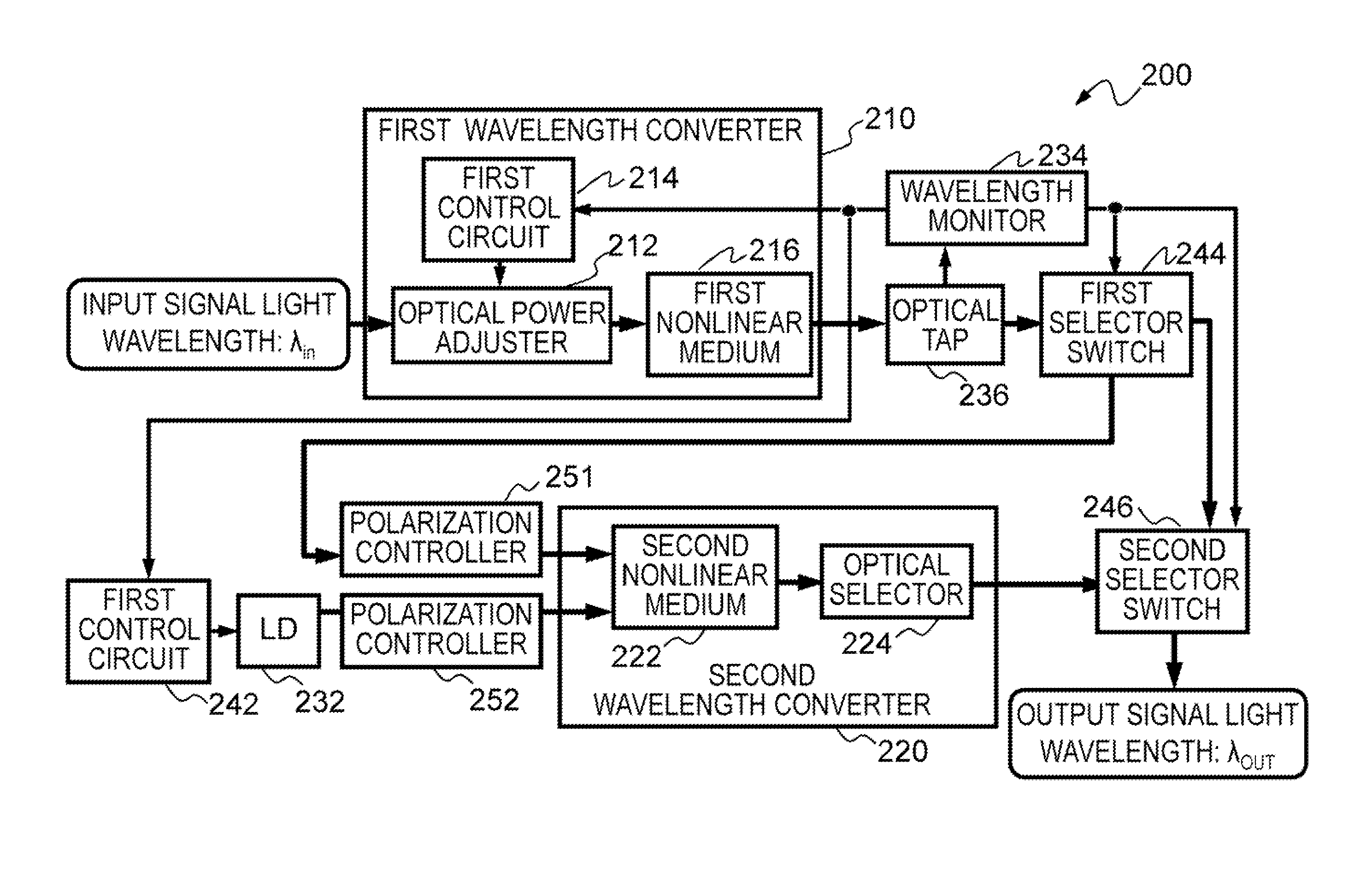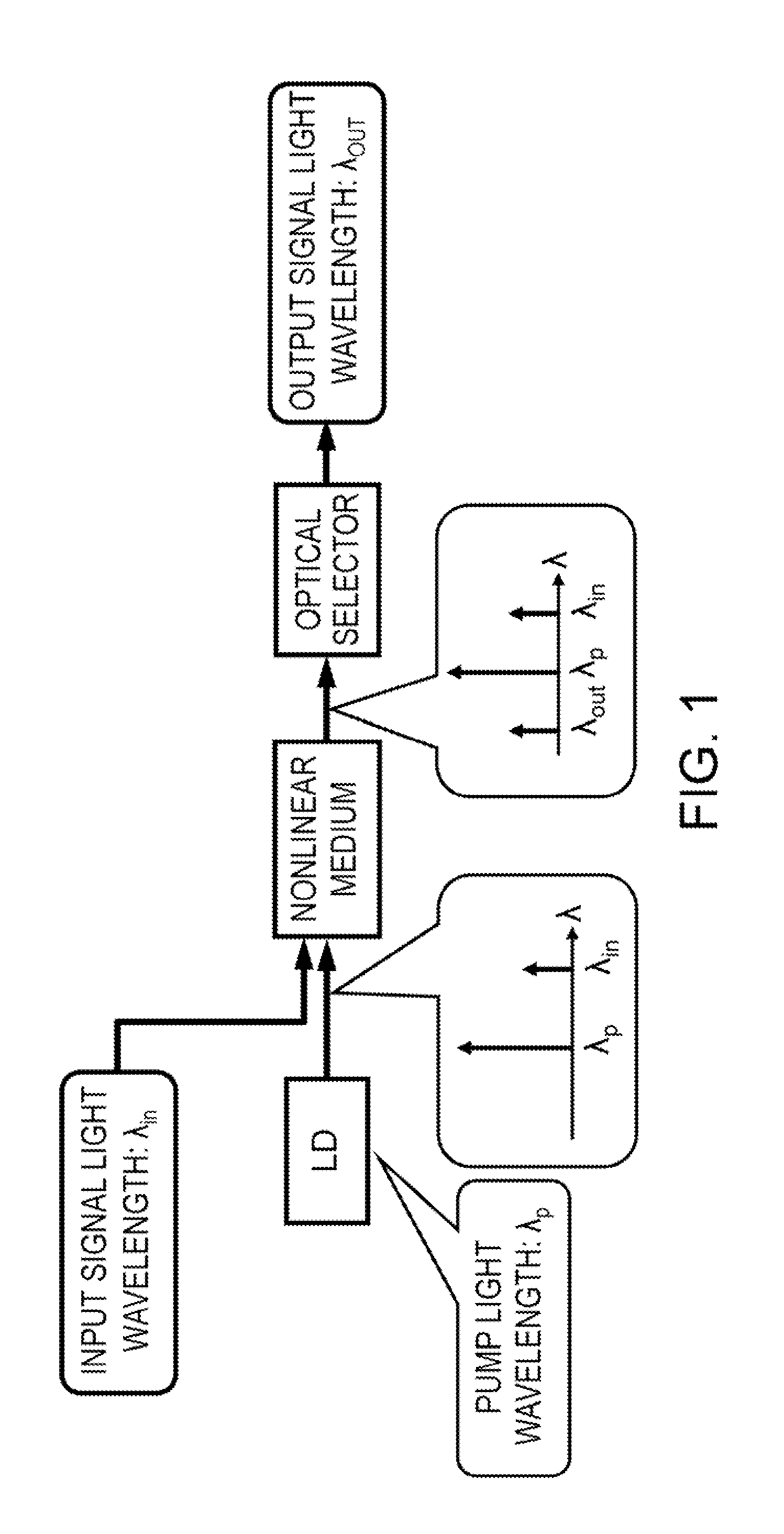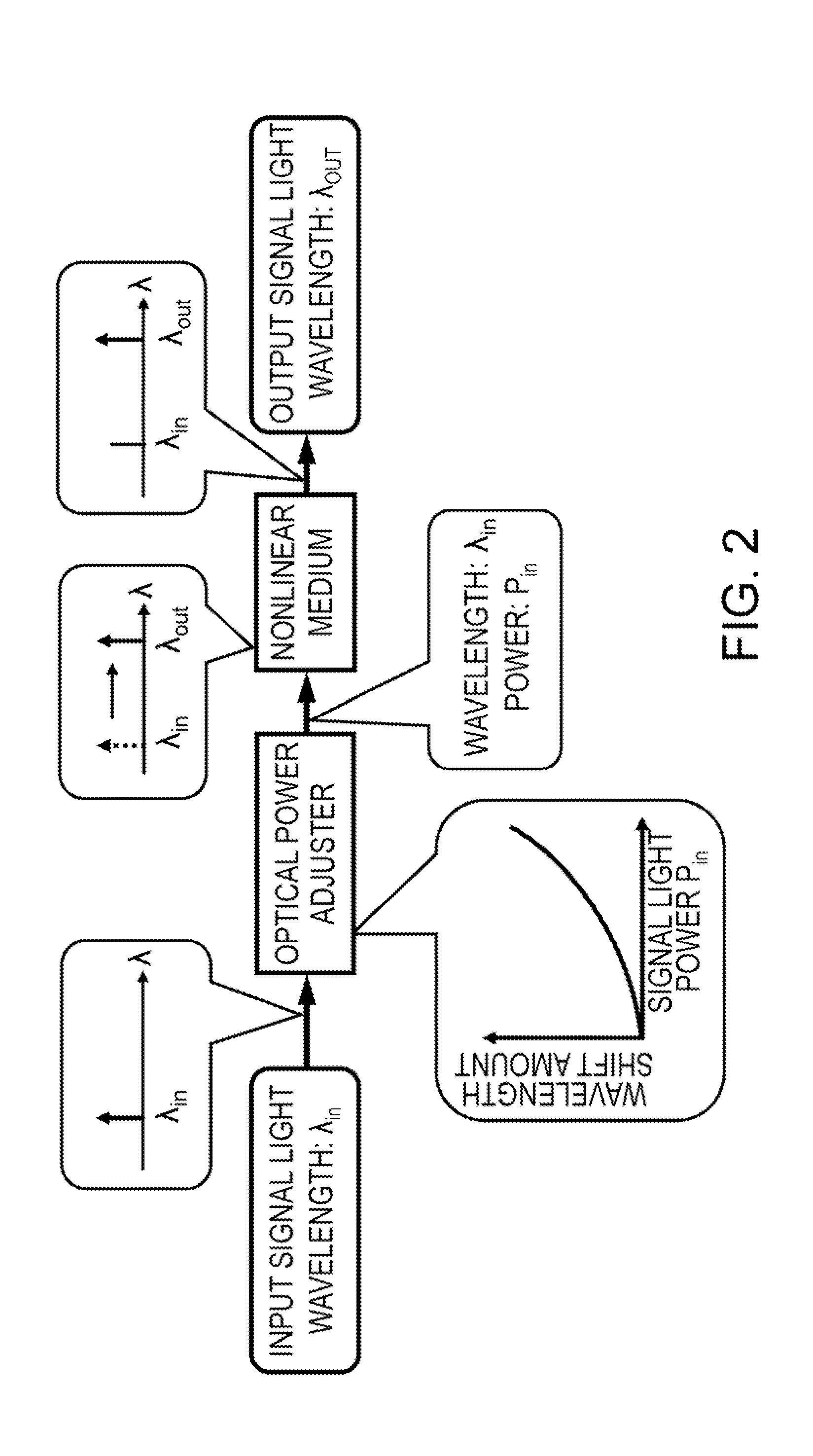Wavelength conversion apparatus, wavelength conversion method, and optical add/drop multiplexer using the same
a wavelength conversion and wavelength technology, applied in multiplex communication, instruments, optical elements, etc., can solve the problems of high-speed response characteristics, limited operation speed of electronic circuitry, and difficulty for a single electric circuit to deal with signals of various modulations
- Summary
- Abstract
- Description
- Claims
- Application Information
AI Technical Summary
Problems solved by technology
Method used
Image
Examples
first embodiment
[0033]A wavelength conversion apparatus of a first embodiment converts a wavelength λin of input signal light into a desired wavelength λout of output signal light and outputs resultant signal light.
[0034]FIG. 3 illustrates an example of a wavelength conversion apparatus of the first embodiment. A wavelength conversion apparatus 100 illustrated in FIG. 3 includes a first wavelength converter 110, a second wavelength converter 120, a laser diode (LD) 132, a wavelength monitor 134, and an optical tap 136. The first wavelength converter 110 includes an optical power adjuster 112, a control circuit 114, and a first nonlinear medium 116. The second wavelength converter 120 includes a second nonlinear medium 122 and an optical selector (filter) 124.
[0035]The first wavelength converter 110 converts a wavelength λin of input signal light into an intermediate wavelength λm using the self-frequency shift effect, and outputs the resultant signal light. The wavelength shift amount that is a dif...
second embodiment
[0056]Next, a second embodiment will be described. The second embodiment and the first embodiment have certain common features. Accordingly, the descriptions below are mainly dedicated to differences between the first and second embodiments and descriptions on common features will be omitted.
[0057]As is the case with the wavelength conversion apparatus of the first embodiment, a wavelength conversion apparatus of the second embodiment includes two wavelength converters that convert wavelengths using the self-frequency shift effect and the FWM effect. The wavelength conversion apparatus of the second embodiment converts a wavelength without wavelength conversion by the FWM effect when a wavelength λin of input signal light is shorter than a desired wavelength λout of output signal light.
[0058]FIG. 5 illustrates an example of a wavelength conversion apparatus of the second embodiment. A wavelength conversion apparatus 200 illustrated in FIG. 5 includes a first wavelength converter 210...
third embodiment
[0073]Next, a third embodiment will be described. The third embodiment and the first to second embodiments have certain common features. Accordingly, the descriptions below are mainly dedicated to differences between the third embodiment and the first to second embodiments and descriptions on common features will be omitted.
[0074]As is the cases with the wavelength conversion apparatuses of the first and second embodiments, a wavelength conversion apparatus of the third embodiment includes two wavelength converters that convert wavelengths using the self-frequency shift effect and the FWM effect. The wavelength conversion apparatus of the third embodiment performs wavelength conversion using the FWM effect before performing wavelength conversion by the self-frequency shift effect.
[0075]FIG. 7 illustrates an example of a wavelength conversion apparatus of the third embodiment. A wavelength conversion apparatus 300 illustrated in FIG. 7 includes a second wavelength converter 320, a fi...
PUM
 Login to View More
Login to View More Abstract
Description
Claims
Application Information
 Login to View More
Login to View More - R&D
- Intellectual Property
- Life Sciences
- Materials
- Tech Scout
- Unparalleled Data Quality
- Higher Quality Content
- 60% Fewer Hallucinations
Browse by: Latest US Patents, China's latest patents, Technical Efficacy Thesaurus, Application Domain, Technology Topic, Popular Technical Reports.
© 2025 PatSnap. All rights reserved.Legal|Privacy policy|Modern Slavery Act Transparency Statement|Sitemap|About US| Contact US: help@patsnap.com



